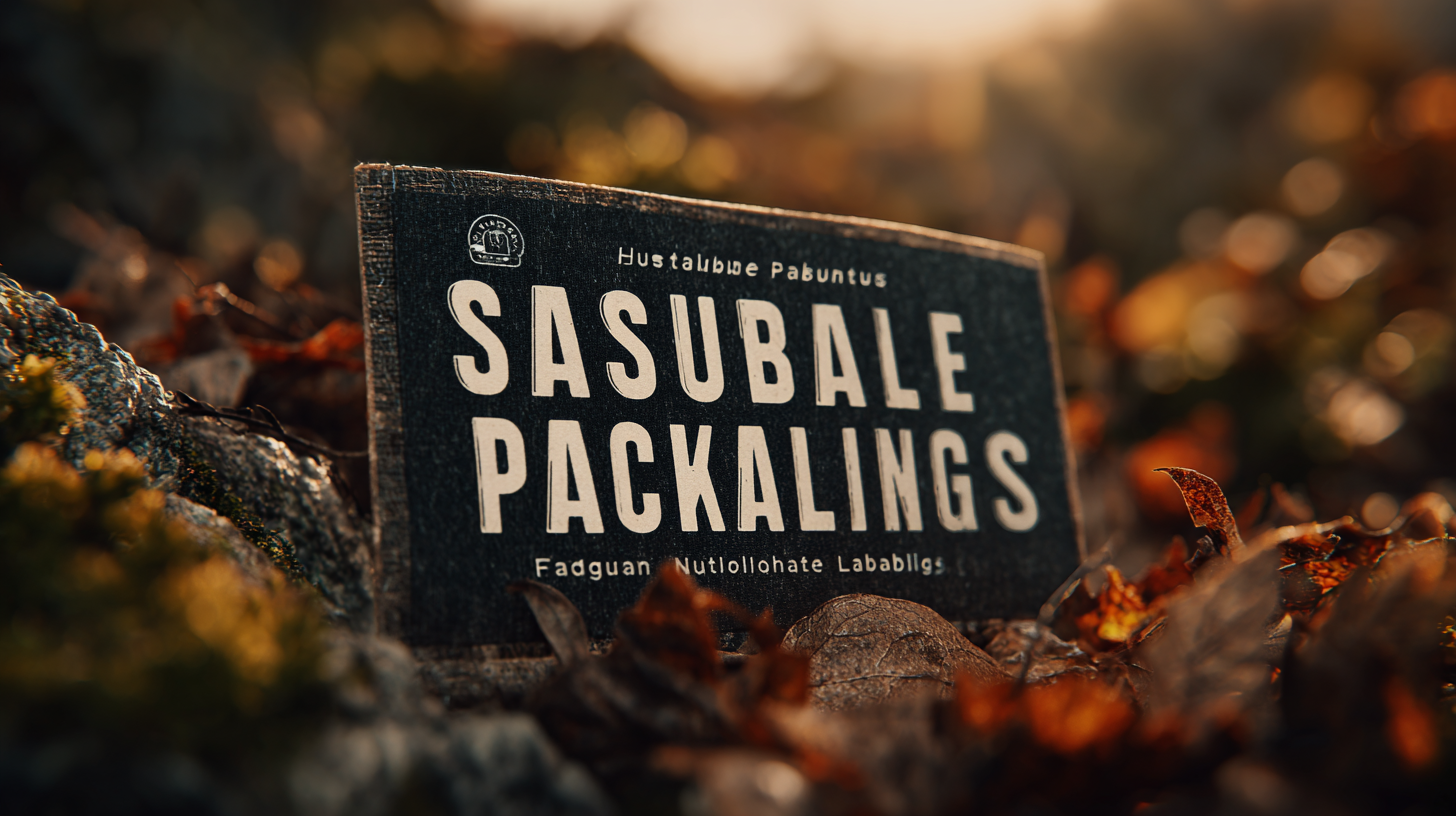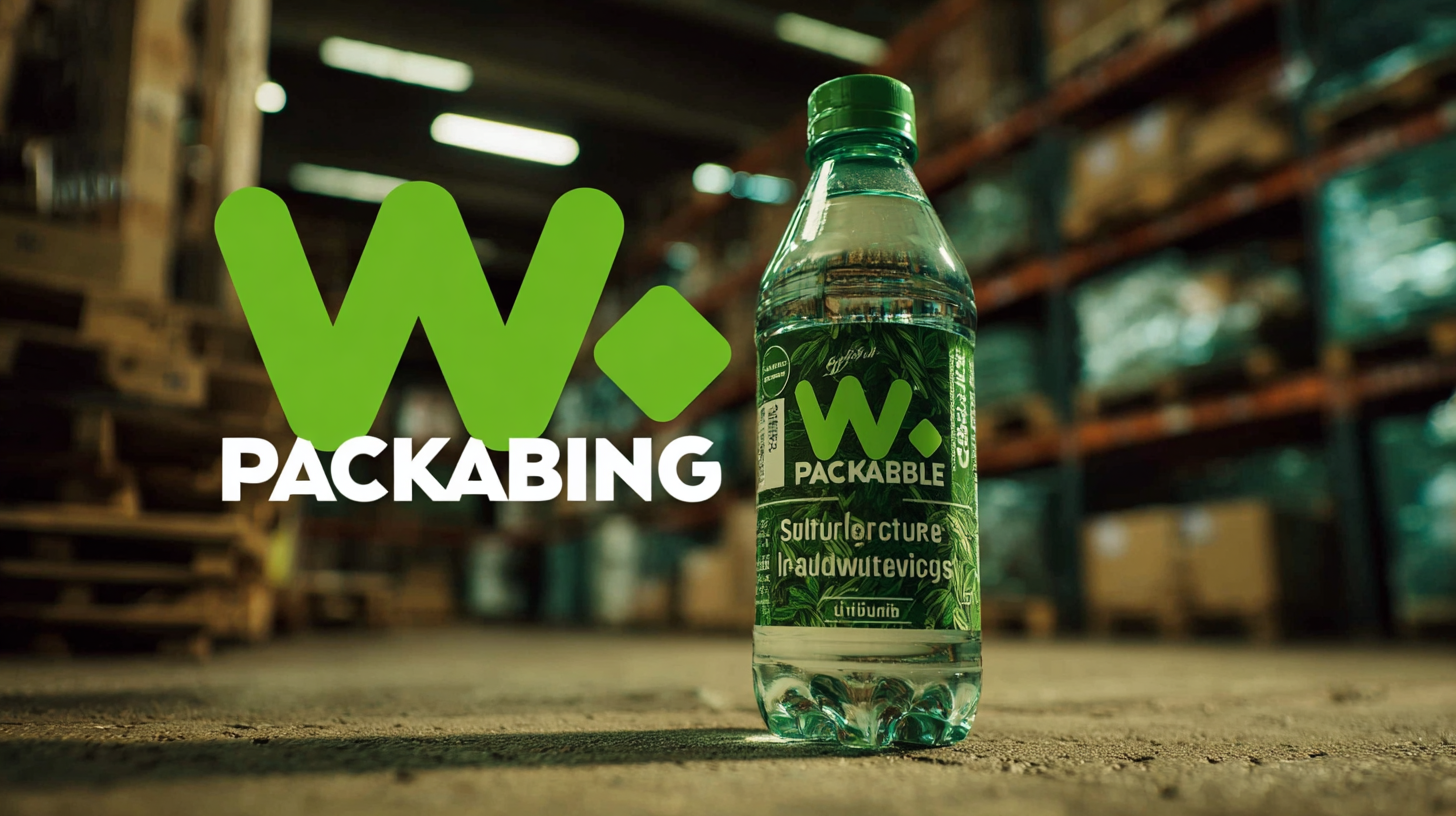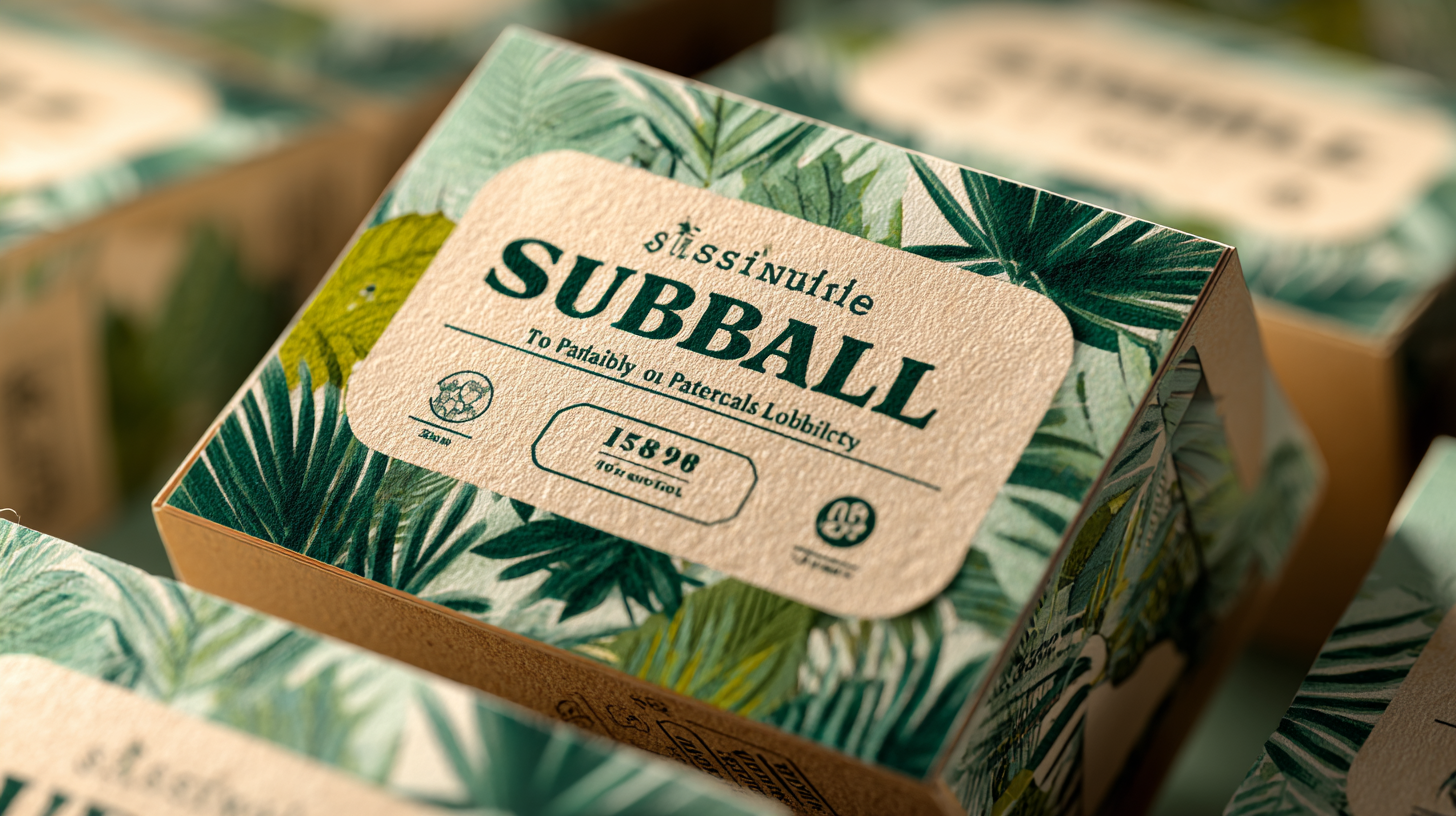The Future of Eco-Friendly Packaging Labels Revolutionizing Sustainability in the Industry
As the global demand for environmentally responsible solutions intensifies, the packaging industry is experiencing a significant transformation towards sustainability. According to a recent report by Smithers Pira, the global market for sustainable labels is projected to reach $19.8 billion by 2025, driven by growing consumer awareness and regulatory pressures for eco-friendly practices.

Sustainable labels for packaging not only serve as a tool for brand differentiation but also play a crucial role in communicating a company's commitment to environmental stewardship. This evolution is marked by innovative materials and technologies that reduce environmental impact while enhancing product appeal.
As companies increasingly prioritize sustainability in their packaging strategies, it is clear that eco-friendly labels are set to revolutionize the industry, aligning consumer preferences with ecological responsibility.
Emerging Trends in Eco-Friendly Packaging Materials and Technologies
The landscape of eco-friendly packaging is rapidly evolving, driven by emerging trends in sustainable materials and technologies that prioritize environmental responsibility. Recent insights from the Sustainable Packaging Market report for 2023-2033 indicate a strong demand for innovative solutions, with a focus on materials that are not only recyclable but also compostable. These advancements are reshaping the industry, as brands look to adopt more sustainable practices in response to consumer preferences and regulatory pressure.
In addition to recycling capabilities, intelligent packaging technologies are gaining traction. Emerging trends highlight developments such as smart labels that monitor freshness and track product conditions, enhancing both safety and sustainability. The predicted growth in the sustainable pharmaceutical packaging market, expected to reach USD 343.01 billion by 2034, underscores the urgency for brands to innovate. As companies prioritize biodegradable and recyclable options in their packaging strategies, the integration of advanced technologies is set to play a crucial role in reducing waste and promoting a circular economy.

The Role of Packaging Labels in Promoting Sustainable Practices
The role of packaging labels in promoting sustainable practices is becoming increasingly vital as industries strive for eco-friendliness. As consumers grow more environmentally conscious, brands are stepping up to meet this demand by integrating eco-friendly labels into their packaging solutions. Biodegradable packaging is gaining traction, with the market seeing a surge in growth, driven by innovative designs and materials that align with sustainability goals. Different packaging forms, such as Bottles, Boxes, and Bags, are being optimized with eco-labels that clearly communicate their environmental benefits.
Tips for brands looking to adopt sustainable practices include selecting biodegradable materials that have a minimal environmental impact. Prioritizing liquid water-based inks for printing can further enhance sustainability, as these inks are less harmful to the environment compared to traditional solvents. Additionally, utilizing geographic indications in product labeling helps signify authentic local products while contributing to regional economic development. By integrating these eco-friendly packaging labels, companies not only promote their commitment to the environment but also engage consumers who value sustainability in their purchasing decisions.
Innovative Printing Techniques for Eco-Conscious Packaging Solutions
The shift towards eco-friendly packaging labels is not just a trend but a necessity in today’s environmentally conscious market. Innovations in printing techniques are revolutionizing how brands approach sustainability. According to a report by Smithers Pira, the global market for sustainable packaging is projected to reach $475 billion by 2026, reflecting a growing consumer demand for environmentally friendly products. This shift has prompted manufacturers to adopt advanced printing technologies like water-based inks and digital printing, which significantly reduce the carbon footprint associated with traditional printing methods.
One impressive innovation is the use of biodegradable and recyclable materials in label production. Techniques such as UV printing and eco-solvent inks have emerged, allowing for vibrant designs without sacrificing environmental responsibility. Research by the Sustainable Packaging Coalition indicates that 74% of consumers are willing to pay more for sustainable packaging options. This statistic highlights the increasing importance of innovative printing solutions that align with eco-conscious values, ultimately driving brands to rethink their packaging strategies and embrace green technology in their operations.
Regulatory Standards and Certifications for Sustainable Packaging Labels
As the demand for sustainable packaging continues to rise, regulatory standards and certifications are becoming essential for companies looking to promote eco-friendly practices. These standards ensure that packaging materials not only meet environmental criteria but are also safe and effective for consumers. Organizations such as the Forest Stewardship Council (FSC) and the Sustainable Forestry Initiative (SFI) provide certifications that help businesses verify their commitment to sustainable sourcing and environmental stewardship.
Tips for businesses: When considering sustainable packaging labels, conduct thorough research to ensure compliance with the latest regulations. Investing in certifications from recognized bodies can enhance your brand’s credibility and appeal to environmentally-conscious consumers. Furthermore, consider engaging with suppliers who prioritize sustainable practices and are transparent about their processes; this collaboration can greatly contribute to a more circular economy.
Additionally, staying informed about upcoming legislative changes regarding packaging materials is crucial. Regularly attending industry conferences or workshops can provide invaluable insights and networking opportunities with sustainability experts. Adopting these best practices will not only aid in meeting regulatory requirements but also position your brand as a leader in the eco-friendly packaging movement.
The Future of Eco-Friendly Packaging Labels Revolutionizing Sustainability in the Industry - Regulatory Standards and Certifications for Sustainable Packaging Labels
| Certification Standard | Description | Sustainability Criteria | Geographic Scope |
|---|---|---|---|
| FSC Certification | Ensures that products come from responsibly managed forests. | Forest management practices, biodiversity preservation, and social benefits. | Global |
| Sustainable Forestry Initiative (SFI) | Focuses on sustainable forest management and responsible sourcing. | Water quality, wildlife habitat, and community impact. | North America |
| Cradle to Cradle Certified | Products designed for circular economy with material health considerations. | Material health, recyclability, renewable energy use. | Global |
| ISO 14021 | Standards for environmental claims on labels and packaging. | Self-declared environmental claims. | International |
| BPI Certification | Biodegradable Products Institute verification for compostability. | Compostability in municipal and industrial composting facilities. | United States |
Consumer Awareness and Demand for Eco-Friendly Packaging Solutions
The rising consumer awareness regarding environmental issues has significantly influenced the demand for eco-friendly packaging solutions. As more people become conscious of their purchasing decisions, brands across industries, including skincare and pharmaceuticals, are compelled to adapt their packaging strategies to align with sustainability goals. This shift not only reflects a commitment to environmental stewardship but also caters to a growing market of consumers who prioritize sustainability in their buying behavior.

In the skincare market, for instance, the global demand for sustainable packaging is projected to escalate, driven by consumer preferences for environmentally friendly products. Research indicates that the sustainable pharmaceutical packaging sector is expected to reach USD 92 billion by 2024, underscoring the crucial role these packaging innovations play in addressing both ecological concerns and regulatory requirements. As brands invest in sustainable materials and innovative designs, the overall packaging landscape is evolving, paving the way for a more environmentally conscious future in the industry.
